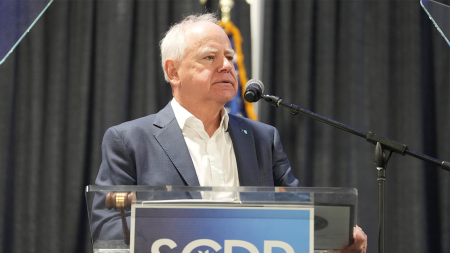San Diego County’s Board of Supervisors recently passed a resolution that significantly restricts cooperation between county agencies and federal immigration authorities, going beyond the limitations imposed by California’s existing sanctuary law. The 3-1 vote reflects a growing trend in some “blue” states and localities to preemptively resist anticipated immigration enforcement actions by the incoming Trump administration. The resolution explicitly prohibits county employees from providing assistance or cooperation to Immigration and Customs Enforcement (ICE), including denying access to individuals in county custody, refusing to share information about release dates, and barring the use of county facilities for ICE investigations. This move has sparked controversy, with supporters arguing it protects vulnerable immigrant communities and opponents claiming it jeopardizes public safety by shielding criminal aliens from deportation.
The resolution’s proponents argue that collaboration with ICE undermines community trust in local law enforcement, making undocumented individuals and their families reluctant to report crimes or cooperate with investigations. They emphasize the potential for family separation and the chilling effect on community policing efforts. Furthermore, they contend that the resolution simply reinforces California’s existing sanctuary law, the California Values Act, which already limits cooperation with ICE but still allows for notification of release dates and transfers to ICE custody in certain circumstances. The resolution seeks to close these perceived loopholes, providing broader protection for undocumented residents.
Conversely, critics of the resolution, including the lone dissenting Supervisor, argue that the measure recklessly endangers public safety by preventing the deportation of criminal aliens. They highlight that the resolution prohibits notifying ICE about individuals in custody, even those convicted of serious crimes like rape, assault, burglary, and child abuse. They assert that this policy obstructs lawful immigration enforcement efforts and undermines the rule of law. Moreover, they claim that the resolution goes significantly beyond California’s sanctuary law, transforming San Diego County into a haven for criminals and actively obstructing federal authorities.
The timing of the resolution, just weeks before the inauguration of President-elect Trump, suggests a preemptive move by the Democratic-controlled Board of Supervisors to establish a protective barrier against anticipated increases in immigration enforcement. Trump has consistently promised to prioritize deportations of criminal aliens and has indicated plans for more expansive immigration enforcement policies. The resolution mirrors a similar policy enacted in Santa Clara County in 2019, indicating a broader movement within California to strengthen protections for undocumented immigrants.
This policy clash between local and federal authorities over immigration enforcement underscores the ongoing tension between states’ rights and federal authority. San Diego County’s resolution reflects a deliberate effort to limit federal immigration enforcement within its jurisdiction, prioritizing the perceived needs of its immigrant community over strict adherence to federal immigration laws. This conflict highlights the complex political and legal landscape surrounding immigration policy in the United States, with local governments increasingly asserting their autonomy in this contentious arena.
The impact of San Diego County’s resolution remains to be seen, particularly given the incoming Trump administration’s stated commitment to stricter immigration enforcement. The resolution sets the stage for potential legal challenges and further political battles over the extent to which local jurisdictions can obstruct federal immigration enforcement efforts. It also underscores the deep divisions within the country regarding immigration policy, with local communities increasingly taking proactive steps to define their own approaches to this complex issue. The upcoming years will likely witness continued clashes between local and federal authorities as this policy debate unfolds.










